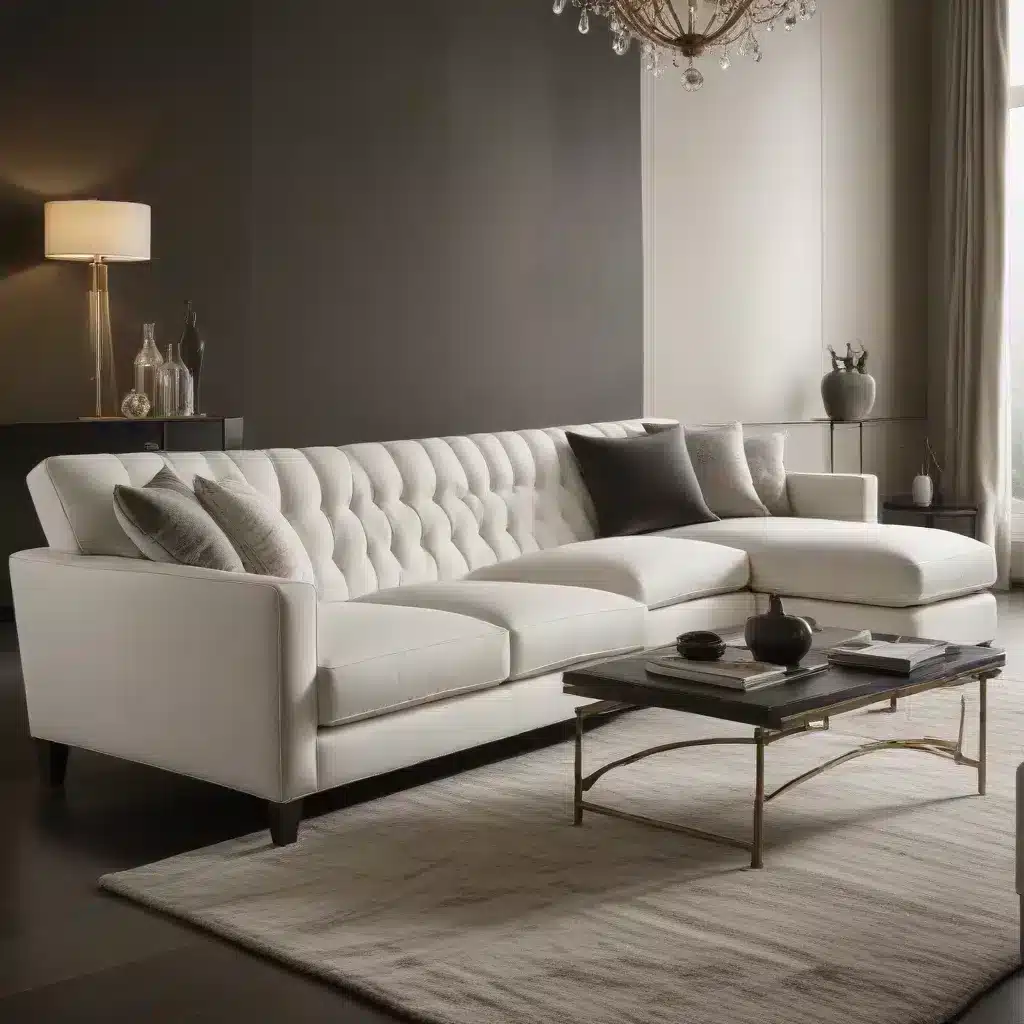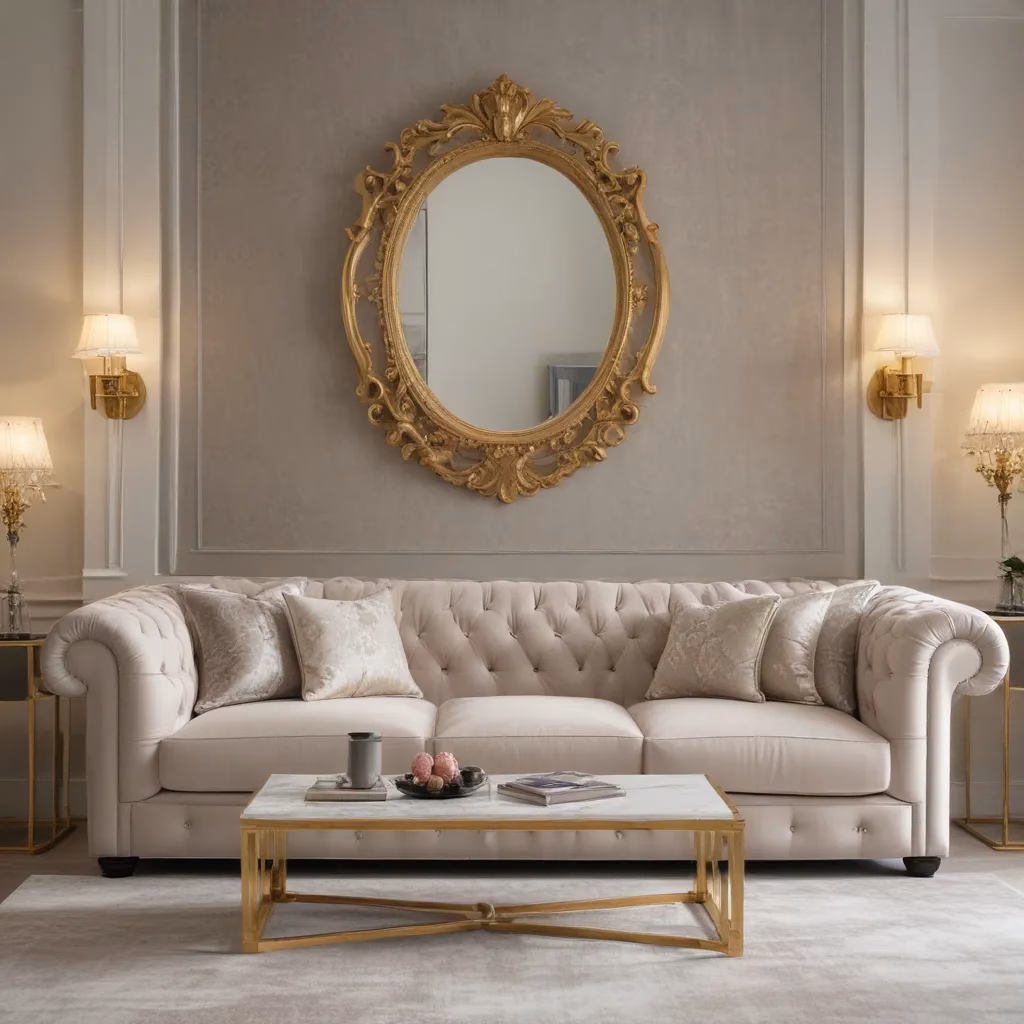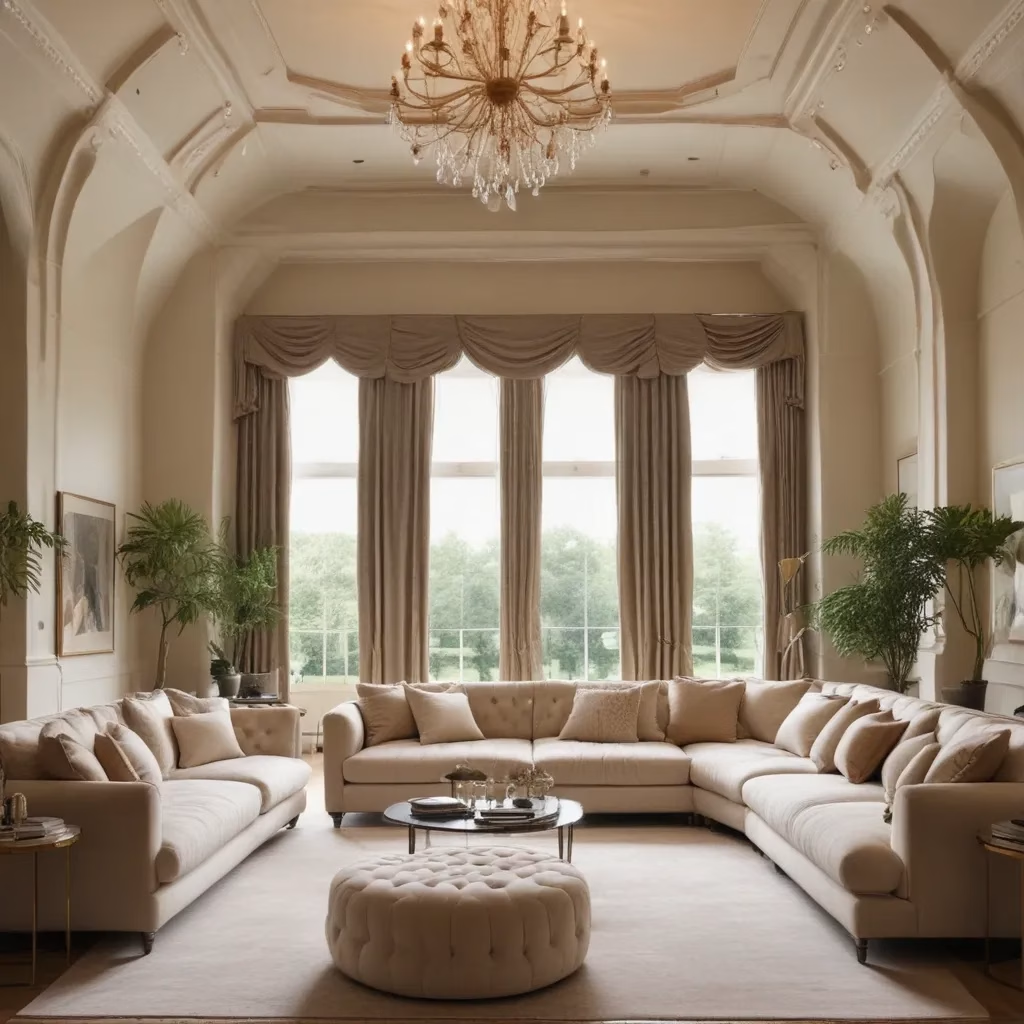
The Art of Sofa Selection: Blending Form and Function
As a furniture specialist with years of experience, I’ve seen countless living rooms transformed by the perfect sofa. It’s not just a piece of furniture; it’s the heart of your living space. When it comes to selecting a sofa that marries timeless elegance with contemporary sophistication, there’s an art to striking the right balance.
The first thing I always tell my clients is to consider the room’s overall aesthetic. Are you aiming for a classic look with ornate details, or do you prefer clean lines and modern simplicity? Your sofa should complement the existing decor while also making a statement of its own. I once worked with a client who had a stunning art deco-inspired living room. We chose a sofa with subtle curved arms and tapered legs that echoed the period’s design without overwhelming the space.
Comfort is paramount, but it doesn’t have to come at the expense of style. I’ve found that many homeowners are surprised by how a well-designed sofa can offer both. For instance, a sofa with a tight back and firm cushions can provide excellent support while maintaining a sleek profile. On the other hand, if you’re looking for that sink-in feeling, plush cushions with a down-feather mix can offer luxurious comfort without sacrificing elegance.
Material Matters: Choosing the Right Upholstery
The upholstery you choose for your sofa can make or break its timeless appeal. In my experience, natural fabrics like linen and cotton are perennial favorites. They age beautifully and offer a tactile quality that synthetic materials often lack. However, for homes with children or pets, I often recommend performance fabrics that resist stains and wear.
Leather is another excellent option for those seeking a sophisticated look. Full-grain leather, in particular, develops a beautiful patina over time, adding character to your sofa. I remember a client who was hesitant about leather, fearing it would be too cold or sticky. We found a top-grain leather with a slightly matte finish that provided warmth and comfort year-round.
Color choice is crucial when aiming for timeless elegance. While bold colors can be tempting, I’ve found that neutral tones stand the test of time. Shades of grey, beige, and taupe offer versatility and can be easily updated with accent pillows or throws. That said, don’t be afraid of color if it speaks to you. A rich navy or forest green can be just as timeless as a neutral, provided it’s in harmony with your overall color scheme.
The Importance of Scale and Proportion
One of the most common mistakes I see in sofa selection is choosing a piece that’s either too large or too small for the room. Scale and proportion are key to achieving a sophisticated look. A sofa that’s too big can make a room feel cramped, while one that’s too small can look lost in a large space.
To get it right, I always recommend measuring your room and creating a floor plan. Leave enough space for traffic flow – ideally, you want at least 18 inches between the sofa and coffee table. Consider the height of your ceilings too. In rooms with high ceilings, a sofa with a taller back can help balance the vertical space.
The shape of your sofa also plays a role in its visual impact. L-shaped sectionals can be great for large, open-plan living areas, creating distinct zones within the space. For smaller rooms, I often suggest sofas with exposed legs, which create a sense of lightness and airiness.
Craftsmanship: The Backbone of Timeless Design
In my years as a furniture specialist, I’ve learned that true timelessness comes from quality craftsmanship. A well-made sofa isn’t just about looks; it’s about longevity. When I’m assessing a sofa’s quality, I look at several key factors:
-
Frame Construction: A solid hardwood frame is essential for durability. Look for joints that are glued, doweled, and corner-blocked for extra strength.
-
Suspension System: Eight-way hand-tied springs are often considered the gold standard, but high-quality sinuous springs can also provide excellent support.
-
Cushion Fill: High-resilience foam wrapped in down or fiber offers a good balance of comfort and durability.
-
Tailoring: Pay attention to the details. Well-matched patterns, straight seams, and even welting are signs of quality workmanship.
I once had a client who was torn between two sofas – one was significantly less expensive but looked similar to the pricier option. Upon closer inspection, we found that the more expensive sofa had a kiln-dried hardwood frame and eight-way hand-tied springs, while the cheaper one used a softwood frame and basic webbing. The investment in quality paid off, as the sofa has remained comfortable and beautiful for years.
Incorporating Contemporary Elements
While we’re focusing on timeless elegance, it’s important to note that contemporary elements can enhance a sofa’s sophistication. Modern design often emphasizes simplicity and functionality, which can contribute to a timeless aesthetic when done right.
One trend I’ve seen gaining traction is the use of mixed materials. A sofa with a leather body and fabric cushions, for example, can add visual interest while maintaining a classic silhouette. Similarly, metal accents – like brushed brass legs – can add a touch of glamour to an otherwise understated piece.
Technology integration is another area where contemporary design meets timeless elegance. Hidden USB ports or built-in wireless charging pads can add functionality without compromising style. I recently worked with a tech-savvy family to find a sofa that included these features seamlessly, ensuring their living room remained both sophisticated and practical.
The Role of Accessories in Enhancing Sofa Design
Accessories play a crucial role in elevating the look of your sofa and tying it into your overall design scheme. As a furniture specialist, I always emphasize the importance of thoughtful accessorizing to my clients.
Throw pillows are perhaps the most versatile accessory for sofas. They offer an opportunity to introduce color, texture, and pattern without committing to a bold sofa fabric. I recommend choosing pillows in varying sizes and shapes for visual interest. A mix of solid colors and patterns can create a curated look that enhances the sofa’s elegance.
Throws are another excellent accessory that can add both style and function. A luxurious cashmere throw draped over the arm of a leather sofa not only looks inviting but also provides warmth on chilly evenings. For a more structured look, I sometimes suggest folding a throw neatly and placing it over the back of the sofa.
Lighting is often overlooked but can significantly impact how your sofa is perceived in the space. A well-placed floor lamp or table lamp can create a cozy reading nook and highlight the sofa’s best features. I once worked with a client who had a beautiful velvet sofa that truly came to life when we added a brass floor lamp beside it, creating a warm glow that enhanced the fabric’s richness.
Maintaining Your Sofa’s Timeless Appeal
Selecting a timeless sofa is just the beginning; maintaining its elegance over the years is equally important. Regular care and maintenance can significantly extend the life of your sofa and keep it looking sophisticated for years to come.
For fabric sofas, I always recommend vacuuming regularly to prevent dust and debris from settling into the fibers. Most spills can be dealt with using a clean, damp cloth, but it’s crucial to blot rather than rub to avoid spreading the stain. For leather sofas, a gentle wipe-down with a slightly damp cloth followed by a dry cloth is usually sufficient for regular cleaning.
Rotation is key to even wear, especially for cushions. I advise my clients to flip and rotate their cushions regularly, particularly in the first few months of use when the filling is settling. This helps maintain the sofa’s shape and prevents premature sagging.
Protection from sunlight is another important factor in preserving your sofa’s timeless look. Direct sunlight can fade fabrics and dry out leather over time. Using window treatments or repositioning your sofa away from direct sunlight can help maintain its color and integrity.
The Psychology of Sofa Placement
The way you position your sofa can have a profound impact on both the aesthetics and functionality of your living space. As a furniture specialist, I’ve observed how sofa placement can influence everything from social interactions to the perceived size of a room.
In most living rooms, the sofa serves as the anchor piece. Placing it against the longest wall often creates a sense of stability and maximizes floor space. However, in larger rooms, floating the sofa away from the walls can create a more intimate seating area. I once worked with a client who had a spacious living room that felt disconnected. By floating the sofa in the center of the room and adding a console table behind it, we created a cozy conversation area without sacrificing the room’s openness.
Consider the focal point of your room when positioning your sofa. This could be a fireplace, a large window with a view, or a media center. Orienting the sofa towards this focal point creates a natural flow and purpose in the room. In rooms with multiple focal points, I often suggest using two sofas facing each other to create balance.
The relationship between your sofa and other furniture pieces is also crucial. Ensure there’s enough space for comfortable movement around the sofa, typically about 30-36 inches for main walkways. Coffee tables should be placed about 14-18 inches from the sofa edge for easy reach without obstructing passage.
Sofa Trends That Stand the Test of Time
While fashion in furniture comes and goes, certain sofa trends have proven their staying power. As someone who’s been in the industry for years, I’ve seen trends come full circle and classics remain steadfast.
The Chesterfield sofa, with its distinctive deep-buttoned upholstery and rolled arms, is a prime example of timeless design. Its origins date back to the 18th century, yet it continues to be a popular choice in both traditional and contemporary settings. The key to its longevity lies in its versatility – it can be dressed up or down depending on the fabric and surrounding decor.
Modular sofas are another trend that has stood the test of time. Their flexibility allows for customization based on changing needs and room layouts. I’ve had clients who initially bought a standard three-seater modular sofa and later added pieces to create an L-shape as their family grew. This adaptability ensures that the sofa remains relevant and functional over the years.
The mid-century modern aesthetic, popularized in the 1950s and 60s, has seen a strong resurgence in recent years. Clean lines, tapered legs, and organic shapes characteristic of this style have proven to be enduringly appealing. I find that mid-century inspired sofas work particularly well in eclectic interiors, adding a touch of retro sophistication without dominating the space.
Sustainability in Sofa Design
In recent years, I’ve noticed a growing interest in sustainable furniture options among my clients. This shift towards eco-friendly sofas not only reflects a concern for the environment but also often results in higher quality, longer-lasting pieces – a key aspect of timeless design.
Sustainable sofas often feature materials like organic cotton, linen, or wool for upholstery. These natural fibers are not only environmentally friendly but also tend to age beautifully, developing character over time. For the frame, look for wood certified by the Forest Stewardship Council (FSC), which ensures responsible forest management.
Some manufacturers are now using recycled materials in their sofa construction. I’ve seen impressive innovations like cushion fillings made from recycled plastic bottles that offer comfort comparable to traditional polyurethane foam. These eco-friendly alternatives often come with the added benefit of being hypoallergenic, making them an excellent choice for clients with sensitivities.
Longevity is a crucial aspect of sustainable furniture. A well-made sofa that lasts for decades is inherently more sustainable than one that needs replacing after a few years. This is where the importance of quality craftsmanship comes into play again. I always advise my clients to view a high-quality sofa as an investment in both style and sustainability.
The Future of Sofa Design
As we look to the future, I see several exciting developments on the horizon for sofa design. Technology integration is likely to become more seamless and sophisticated. We’re already seeing sofas with built-in speakers and charging stations, but I anticipate this trend will evolve to include smart fabrics that can change color or pattern at the touch of a button.
Customization is another area ripe for innovation. With advancements in manufacturing techniques, I expect we’ll see more options for bespoke sofas that can be tailored to individual preferences not just in terms of size and fabric, but also in ergonomics and functionality.
The line between indoor and outdoor furniture is likely to continue blurring. High-performance fabrics that can withstand the elements while maintaining a luxurious feel are already available, and I anticipate we’ll see more sofas designed to transition seamlessly between interior and exterior spaces.
As urban living spaces become smaller, multi-functional sofas will become increasingly popular. Sofa beds have been around for decades, but the future might bring us sofas that can transform into dining tables or workstations with the push of a button.
Regardless of these innovations, the fundamental principles of timeless design – quality, comfort, and versatility – will remain constant. The sofas of the future, like the best designs of the past, will balance form and function in a way that stands the test of time.
Conclusion
In the world of interior design, few pieces have the power to define a space quite like a sofa. It’s more than just a place to sit; it’s a statement of style, a hub of family life, and often the centerpiece of our most cherished moments at home. As we’ve explored in this article, achieving timeless elegance and contemporary sophistication in sofa design is an art that balances numerous factors – from material selection and craftsmanship to placement and accessorizing.
Whether you’re in the market for a new sofa or looking to breathe new life into your existing living space, remember that true timelessness comes from quality, comfort, and a design that speaks to your personal aesthetic. By considering the principles we’ve discussed – the importance of scale, the impact of materials, the role of accessories, and the value of sustainable choices – you can create a living space that’s not only beautiful but also functional and enduring.
As you embark on your sofa selection journey, I encourage you to take your time, do your research, and don’t hesitate to seek expert advice. A well-chosen sofa is an investment in your home and your quality of life. And if you’re looking for inspiration or guidance, Sofa Spectacular offers a wealth of options that embody the perfect blend of timeless elegance and contemporary sophistication.
Remember, your perfect sofa is out there – one that will not only meet your needs today but will continue to bring you joy and comfort for years to come. Happy sofa hunting!



